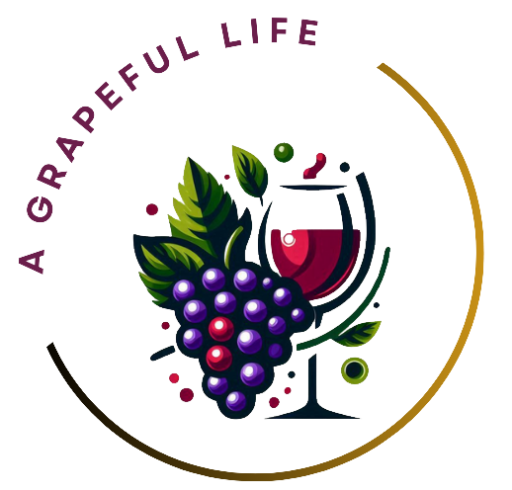Welcome to A Grape Full Life’s Wine Glossary for Beginners—your go-to guide for decoding wine lingo! Whether you’re just beginning your wine journey or looking to sharpen your tasting skills, this glossary will help you understand the language of wine and make your experience more enjoyable.
For a deeper dive, don’t forget to explore our Ultimate Guide to Wine: Learning to Understand, Taste, and Appreciate.
An A-Z Wine Glossary
Acidity
The fresh, tart, and crisp quality of wine, coming from the natural acids in grapes. High acidity gives wine a lively, mouthwatering feel.
Aeration
The process of exposing wine to air to allow it to “breathe,” releasing more aromatic compounds. This can soften tannins and enhance flavors.
Aging
The process of allowing wine to mature in barrels or bottles, which can develop more complex flavors and aromas over time.
Alcohol by Volume (ABV)
Indicates the percentage of alcohol in a wine. Most wines range between 12% and 15% ABV.
Appellation
A legally defined and protected geographical indication used to identify where grapes for a wine were grown (e.g., Bordeaux, Napa Valley).

Aroma
The smells derived from the grape variety itself, often referring to young wines. See bouquet for aged aromas.
Balance
A harmonious combination of wine elements—acidity, sweetness, tannins, alcohol, and fruit.
Barrel
A wooden container, often oak, used to ferment or age wine, imparting flavors like vanilla, spice, or toast.

Blend
A wine made from more than one grape variety. Common blends include Bordeaux (Cabernet Sauvignon and Merlot) or GSM (Grenache, Syrah, Mourvèdre).
Body
The weight or fullness of the wine in your mouth, often described as light, medium, or full-bodied.
Bouquet
The complex scents that develop in wine as it ages, different from the grape’s primary aroma.
Brut
A French term used for dry sparkling wines. Indicates little or no sweetness.
Corked
A fault in wine caused by TCA (trichloroanisole), leading to musty, damp aromas. The wine is undrinkable.
Decanting
Pouring wine into a separate vessel to remove sediment and allow the wine to breathe.

Dry
A wine with little to no residual sugar. Opposite of sweet.
Earthy
A tasting descriptor for wines with aromas or flavors reminiscent of soil, mushrooms, or forest floor.
Finish
The length of time the wine’s taste lingers on your palate after swallowing. A longer finish is often a sign of quality.
Legs
The droplets that form on the inside of a glass after swirling. They indicate alcohol or sugar levels but not necessarily quality.
Mouthfeel
The tactile sensation of wine in the mouth—silky, rough, creamy, or velvety.
Nose
A term for the bouquet or aroma of the wine when smelled.
Reserve
A term used by wineries to indicate a special bottling, though not legally regulated in all regions.
Oaky
Describes flavors or aromas like vanilla, butter, or toast, imparted by oak barrels.
Palate
The overall taste experience of the wine in your mouth.
Sommelier
A trained wine expert, often working in restaurants to assist with wine selections and pairings.

Structure
How well the components (tannins, acidity, alcohol) of a wine hold together. A well-structured wine feels balanced and complete.
Sweetness
The level of residual sugar in wine. Common descriptors include dry, off-dry, semi-sweet, and sweet.
Tannins
Natural compounds found in grape skins, seeds, and stems, contributing to wine’s structure and astringency. Predominantly in red wines.
Terroir
The unique environment (soil, climate, topography) where grapes are grown, influencing the wine’s character.
Vintage
The year the grapes were harvested. Important for understanding a wine’s age and quality.
Young
A wine that hasn’t aged much, typically fresh, fruity, and vibrant.
With this wine glossary under your belt, you’re all set to elevate your wine knowledge. Head over to our Ultimate Guide to Wine for tips on tasting, pairing, and more.
